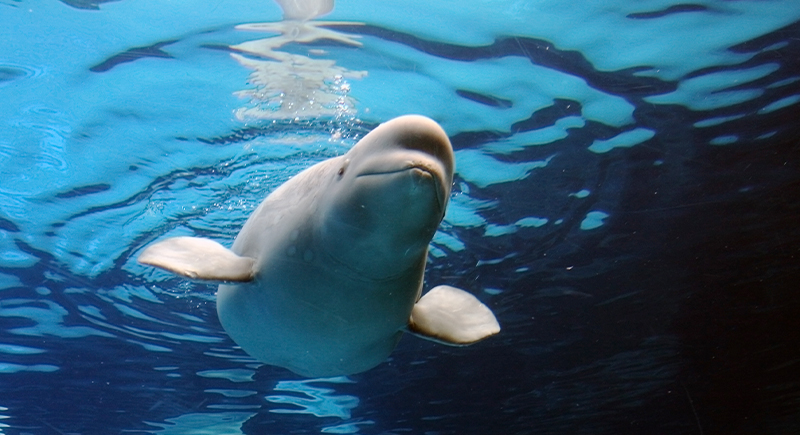The Incredible Story of How Two Kayakers Rescued a Stranded Beluga Whale
When Mateo Niclas prepared for a fishing trip in Alaska, he didn’t expect to come face-to-face with a stranded whale. Along the edge of Turnagain Arm, he noticed a large white shape half-buried in the mud.
At first, it seemed like debris, but closer inspection showed it was a beluga in serious trouble. The whale was pinned in glacial silt, unable to move as the tide receded. Knowing how dangerous those mudflats can be, Mateo and another kayaker crossed the water toward the animal. Once there, they immediately began looking for ways to keep it alive.
The Whale Was Trapped in Alaska’s Most Dangerous Mudflats
Turnagain Arm, near Anchorage, is infamous for its fast-moving tides and unstable mudflats. When the tide recedes, it leaves behind soft, glacial silt that looks solid but traps anything that steps on it.
The beluga had stranded itself during low tide, and witnesses could see its large white body completely immobilized. According to estimates shared in reporting, the whale weighed over 3,000 pounds, and in that moment, it was sinking further into the silt every minute.
Belugas can’t last long once they’re stranded. The weight of their own bodies begins to press down on the lungs, and the risk of dehydration grows quickly. An animal built to float is left pinned against ground that won’t give way, with no tide in sight to lift it free.
A Small Group of Kayakers Responded Without Delay
Mateo Niclas saw the whale while preparing to fish. Without calling for assistance first, he and another man paddled across and began pouring water on the whale to keep it cool. They used buckets and whatever gear they had. Throughout this time, Mateo made sure the whale stayed calm and didn’t get spooked.
After around 10 minutes, other kayakers and fishermen joined. Together, eight men worked around the animal and formed an improvised response team. They placed a small rope around the whale’s tail to help reposition it.
One rescuer confirmed they kept it loose to avoid causing harm. Subsequently, the group timed their efforts, using counted heaves to push and pull the whale toward the waterline. The movement was slow, and none of them knew if it would work. Eventually, the whale began to move forward.
The Release Was Sudden

Image via iStockphoto/cmeder
The rope came off just as the beluga reached enough depth to move on its own. As the water lifted its body, it started to swim. The moment was tense but short. The whale disappeared into the deeper channel without resistance.
Experts Later Urged the Public Not to Copy This Rescue
Though the whale survived, wildlife organizations reminded the public that stranded marine mammals need trained care. NOAA Fisheries in Alaska, which handles marine rescues, asks people to report strandings immediately instead of attempting their own interventions. There are several reasons for this.
First, animals like belugas can strand due to injury or illness. Moving them without medical evaluation may worsen their condition. Second, contact with stressed wild animals increases the risk of disease transfer and injury to people. Third, even well-meaning actions, like splashing water near a blowhole, can cause complications if done incorrectly.
Mateo Niclas later acknowledged this and shared the Alaska rescue hotline number in his follow-up. He was clear that his group got lucky because had the tide moved faster or the animal panicked, things might have ended differently.